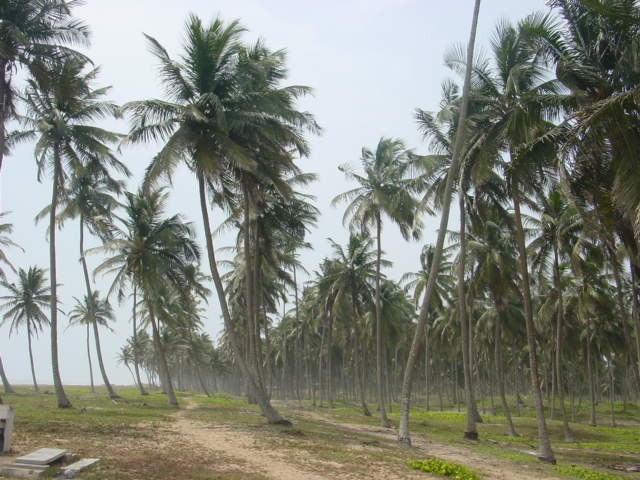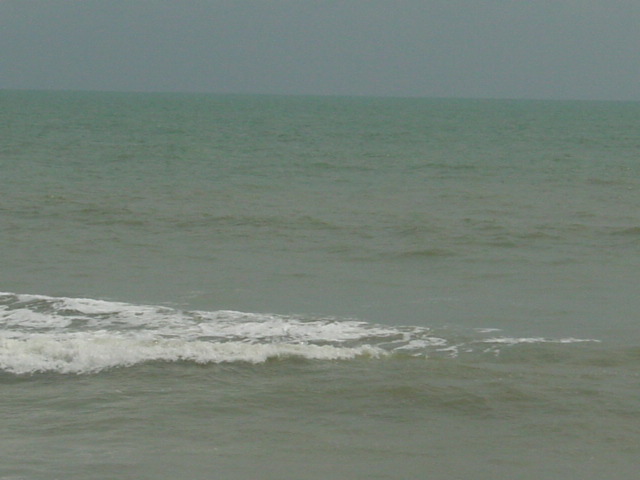FINDING ROOTS IN NIGERIA 
BADARY BEACH, NIGERIA
With it's stately palm trees and wind-blown surf, Badagry Beach is one of the most deceptively beautiful spots in Nigeria. For yet one can only imagine the human suffering that haunts this land: the last sight hundreds of thousands of men and women saw of their African homeland, as they were herded onto ships to be sent to work for free in the mines, fields and factories of the Americas.
We came to Badagry, a slave port from the 1400s until Brazil finally outlawed slavery in the 1880s.
Neck Shackles in Badagry Museum
A tour of the Slave Museum in Badagry shows the shackles the Africans were forced to wear around their necks, chained to the person in front and behind who wore similar devices on their necks. The slaves were bought to Badagry from inland and sold to the French, the British, the Dutch and the Portuguese. Each country had it's own sector of Badagry where it kept goods for trading with local African slave catchers, and where it held those enslaved until the ship arrived. The slave trade started here in the 1400, but the peak of operations was in the 1770s.
BADAGRY
The Director of the Museum Ashamu Fadipe said most Yorubas, who were enslaved, likely came through this route. He also estimated that about one in 50 of the slaves taken to the Americans exited Africa from this Bight of Benin port.
Slavery was so much a part of the history of this city that every family, said Fadipe, a Badagry native, passes down the knowledge:
BADAGRY MUSEUM
My parents told me. I told my child that they were taken away from here...to tell them that you must not forget your history. We want to let them know that you have people of your own type in the United States, in Brazil and in South America, said Ashamu Fadipe, the Badagry Museum Director.
MUSEUM DIRECTOR AND SAM
The city of Badagry is separated from the ocean by a lagoon and a mile-wide strip of land. They call it the point of no return. The slaves were transported by canoes over the lagaoon and then they had to walk that last mile. The day we were there the temperature was in the 90s. We were extremly hot. I thought about the slaves taking this last journey. The fear and uncertainty or the total despair that must have consumed their thoughts as they took, what for us was a 20 minute walk.
THE LAST MILE OF AFRICA
The longer we walked, the louder grew the sound of the surf crashing against beach. Half way there was a place for the slaves to rest briefly and get a drink of water...until they arrived at the beach, where a ship would be waiting to take them away from the African continent forever.
SLAVE MEMORIAL AT BADAGRY
WORDS ON THE MEMORIAL
THE BIGHT OF BENIN
